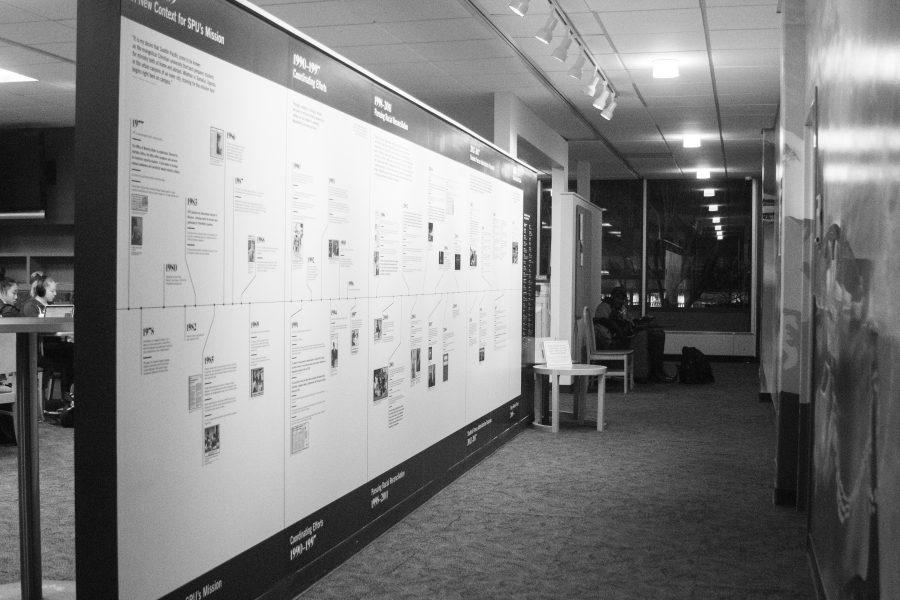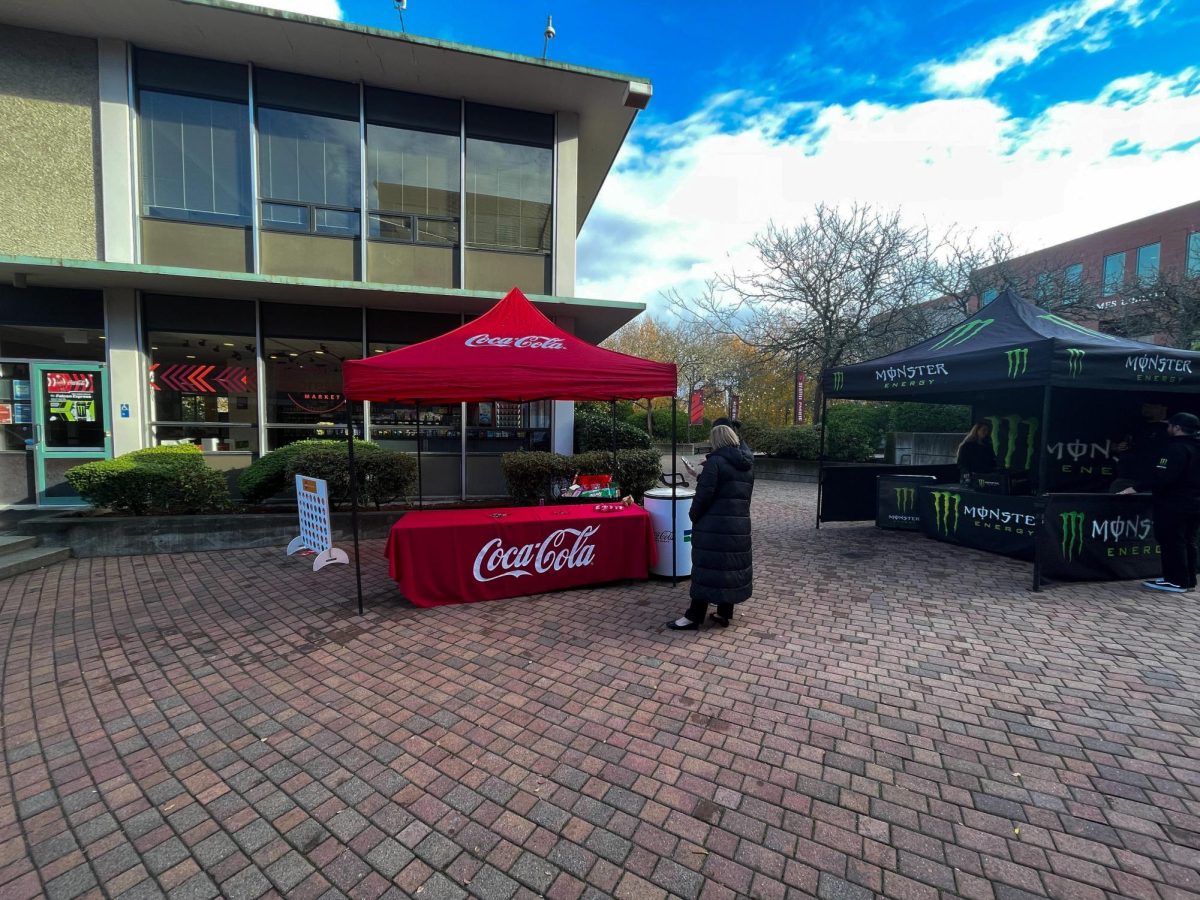Photo courtesy of The Falcon: A new Diversity Timeline was unveiled in Weter Hall, sparking conversation about SPU’s history.
On Jan. 31, in Weter Hall, the Office of Diversity, Equity, and Inclusion (ODEI) hosted a reception for the newly built wall-mount timeline display that will be “exploring how Seattle Pacific has engaged and experienced diversity over time.”
The packaging and reception of the display gave me cause to question who benefits most from diversity.
The predominant demographic in the audience was middle aged, white, male attendees ogling at how far SPU has come since the school’s formation in 1891. I looked around for people of color, but including Sandra Mayo, the vice president of the ODEI and host of the event, and myself there couldn’t have been more than four.
While diversity, both in the student body and in the staff, benefits both majority and minority groups, it is important to consider how having a wide variety of cultures and backgrounds benefits majority groups who display diversity like a flashing vacancy sign.
The timeline is surely a step in the right direction, but it is also as surely intended as a display.
After Mayo introduced the scope and purpose of the timeline, attendees grabbed handfuls of popcorn and perhaps a single Hershey’s chocolate from a small glass bowl, and slowly circled the display, curiously pointing out interesting events.
While SPU is becoming increasingly diverse, something that can only yield positive results for all students, it would seem that its display of diversity is mainly intended for administrators, and not necessarily for people of color or other minority groups.
A prominent example of this is found in the ways that colleges directly benefit from international students’ tuition.
As David Shih points out in his 2017 article “A Theory To Better Understand Diversity, And Who Really Benefits,” universities directly benefit from the heightened accrued tuition by an influx international students. Student body diversity, in terms of international students’ presence, directly affects the institutions’ bottom lines.
Attracting international students, especially in light of current political rhetoric and travel bans on Muslim majority countries, involves putting up a banner of acceptance and inclusion.
As Shih puts it, “Quite simply, it is in an institution’s financial interest not to be seen as racist.” Furthermore, according to a 2016 Business Insider article, international students in the United States pay significantly higher tuition than both in-state and out of state undergraduates, “effectively subsidizing tuition costs for domestic students and functioning as a bailout for universities.”
Diversity is not just an ideology, it is a financial necessity. To put it simply, diversity does pay off. Additionally, student body diversity helps white students gain a more enlightened world view.
Because homogeneity breeds ignorance, the ability to come into contact with racial and ethnic diversity allows white students to come into contact with other students’ cultures.
Student body diversity does not benefit minority students in the same way, because while white people are only required to be immersed in white culture, non-white students are forced to be familiar with white culture in conjunction with their own.
Diversity on college campuses will also expose minority groups to cultures different than their own, and this is inherently beneficial, but it is more likely that they are actually the ones on display.
By putting diversity on display, SPU and other colleges show that their respective institutions provide opportunities to gain a more accurate view of a multicultural world, and are safe for international students to come and pay higher rates of tuition.
That being said, diversity obviously does benefit the people it includes.
I am brown and a first-generation college student. I enjoy the privilege of higher education. Although I tread on the white suspicion that I am only here to make my university look more colorful, that the chunk of financial aid I receive is a handout, I am grateful to be in school.
This column does not aim to disparage the production of the diversity timeline board or the push for diversity on college campuses.
The effort that the ODEI put into the board is self-evident as the board addresses local and national events from 1855 to 2018
For instance, in 1950 the diversity timeline shows the Associated Students of Seattle Pacific College hosted a minstrel show at the university, complete with comedians and musicians dressed in blackface.
For this alone, the timeline should be commended for its fearlessness to display SPU’s embarrassing history paired with advancements in diversity and inclusion, such as the recent establishment of the Office of Diversity, Equity and Inclusion, created in June 2017.
American colleges should be striving to create the melting pot that the United States always prides itself to be. It is mutually beneficial for majority and minority groups to integrate.
But still, it is worth noting who diversity benefits more before we bruise our hands clapping for displays of progress.





















































































